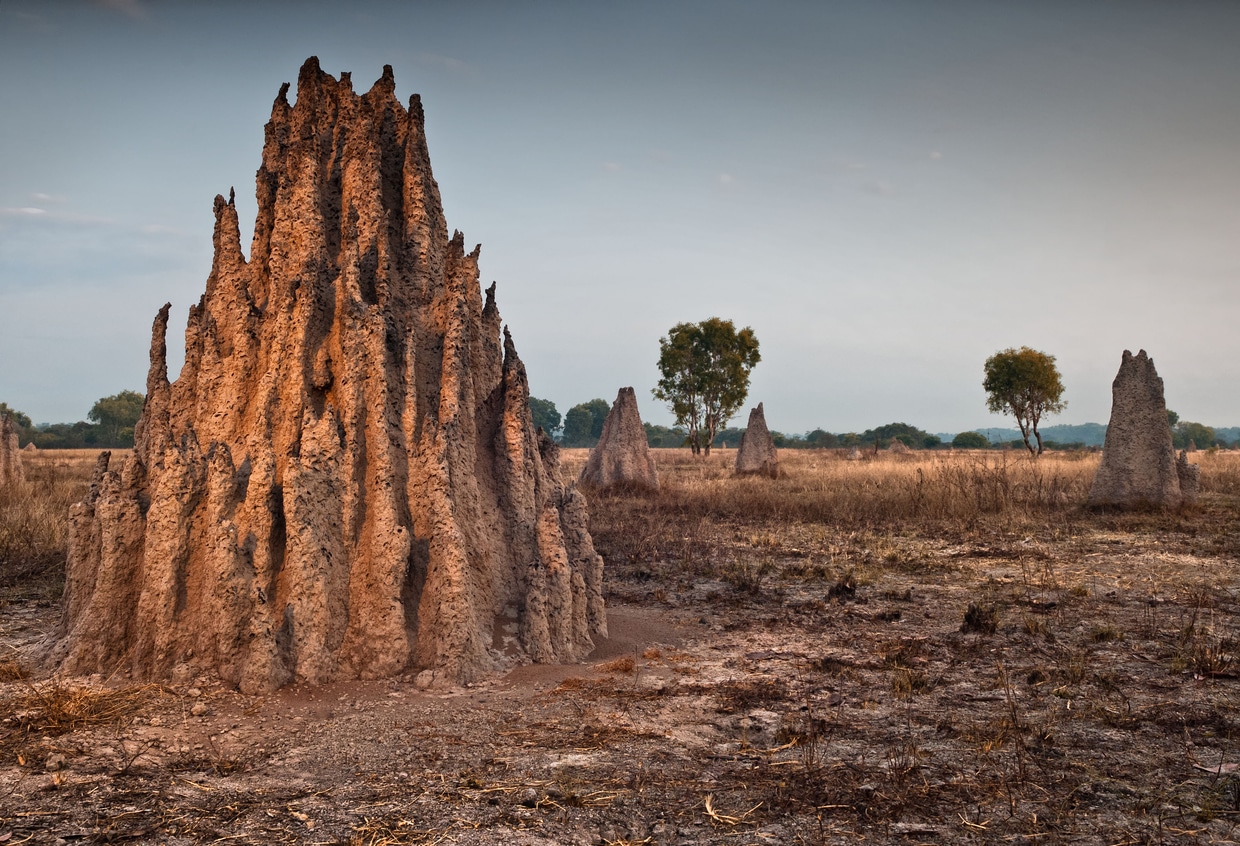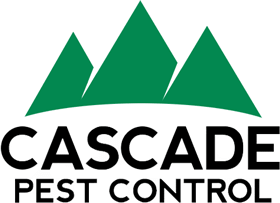Author: Kurt Treftz, Cascade Pest Control

Termites are tiny insects with a big impact – and not just their ability to damage huge structures. They also BUILD huge structures. Termite mounds are some of the most impressive, intriguing, and inspiring structures built by insects. Engineers and entomologists alike are fascinated by termites.
Why do termites make mounds?
While North America is home to plenty of these wood-eating creatures, our local species don’t build mounds. Most termites found in the Pacific Northwest are underground or living in existing structures. The most common termites in the Seattle area are subterranean and dampwood species.
Mound-building termites live in Africa, Australia, and South America. They build their elaborate structures both above and below ground. The extensive system of tunnels and conduits serves as a home to provide protection and safety.
In addition to providing a defensible position to guard against enemies, the mound has a complex ventilation system to help control the temperature inside the mound. In these hot climates, termites are susceptible to damaging, even fatal, heat because they can’t regulate their own body temperature. Instead, they regulate the temperature of the mound.

The huge mound also helps the colony maintain acceptable levels of moisture and respiratory gasses. Many termites cultivate fungi in their colonies. This farming is a symbiotic relationship: termites keep the mound at about 86 degrees and feed and water the fungi and in exchange the fungi provide a cellulose food source for the termites. The tunnels, channels, and conduits are created to promote ventilation and air circulation which allows for the exchange of gasses and thermoregulation.
The tunnels connect all the galleries (both above and below ground) but they also provide highways to transit. Mound-building termites are primarily farmers; but they are also foraging insects. They create tunnels that allow them to access their foraging area. Termites’ foraging area might be as much as ½ acre.
How are termite mounds constructed?
Termites mounds are feats of engineering. Some are dozens of feet high and more than 90 feet in diameter. They are so well-made that they often outlive the termites that call them home. Sometimes, they will even become home to another generation of termites.
Mounds are composed of termite saliva, feces, water, and clay. The colony begins underground and then termites build up the exterior structure. They build walls and chimneys to protect the colony and regulate temperature. Using just their bio-cement, termites build mounds so strong they can only be broken with a drill or hammer. They are so stable that they boast safety factors in the double digits (while human structures are built to factors of just 1, 2, or maybe 3).
Termites are hard-wired to build. Even though they are blind, they use the materials around them to form their building blocks. When left in a petri dish, termites make bolus (spherical “bricks”) from just about any material: agar, glass beads, paper, and even metal powders. Although, they seem to prefer good old soil. Using just the right ratio of soil-liquid, termites create densely packed consolidates that dry to create a cohesive force known as soil suction. The result is an extremely strong structure. The saliva also seems to protect the mound from weathering and erosion.
Termites create strong interior walls and more porous exterior walls to facilitate gas exchange. In nests with capped chimneys, the thermosiphon effect seems to create the regulation they need. Warm air rises and draws cool air into the nest.
Open chimneys appear to use the Venturi effect. Wind velocities are higher at the top of the tall chimneys. The Venturi flow draws fresh air into the mound at ground-level opening. The air travels through the nest and then out of the mound through the open chimneys.
Regardless of which effect creates the gas exchange, it helps to keep regular temperature, humidity level, and information exchange. The termites receive information about the needs of the colony through pheromones that cycle through the nest.
What can humans learn from termite mounds?
Biomimicry: using what we learn from nature to solve problems. Scientists, architects, and even robotics experts are captivated by the inspired structures created by termites. By learning how termites operate, humans can make positive changes in their designs and processes.
- Thermoregulation – Termites have much to teach humans about passive heating and cooling. The very design of their structures maintains a consistent temperature in the mound. They do this with natural materials and construction. Their double-layer construction and porous walls all contribute to keeping the temperature and humidity in the mound constant. If humans could learn from this, it would mean a significant reduction in dependence on artificial heating and cooling, saving energy consumption and costs.
- Ventilation – Termite mounds are a master class in ventilation. These tiny insects can create structures that enhance airflow and control it to benefit the colony, managing humidity, temperature, and oxygen. If human builders applied termite techniques, our buildings could enhance air flow and reduce the need for fans and artificial air conditioning.
- Stability – These mounds are so stable, strong, and long-lasting that they often outlive the termites themselves. Their saliva helps to coat the mound making it resistant to erosion. If humans could build like termites, the construction process could be more sustainable and eco-friendly.
Those of us in the Seattle and western Washington area won’t see termite mounds, but we may encounter termites and/or their destruction. ‘Have no fear, Cascade is here’ to service and protect you and your home from termites. Call us if you want a termite inspection or need termite control for your home of business.
